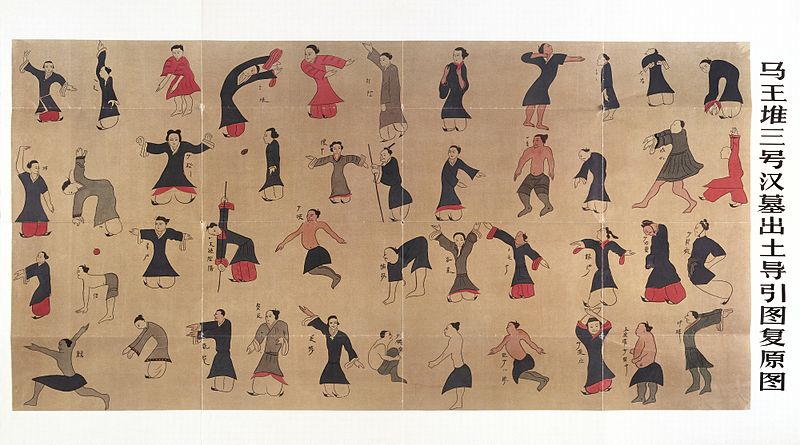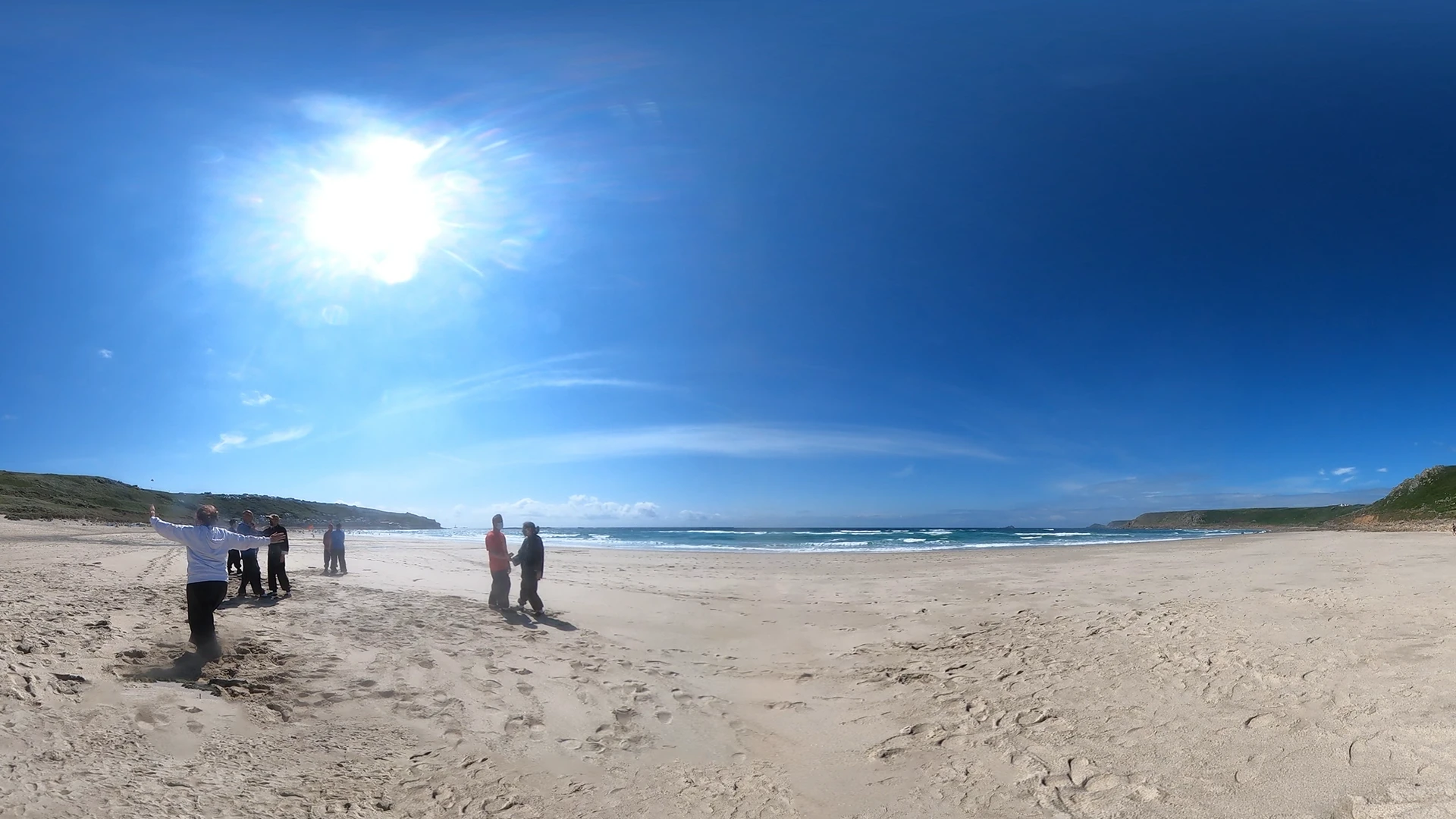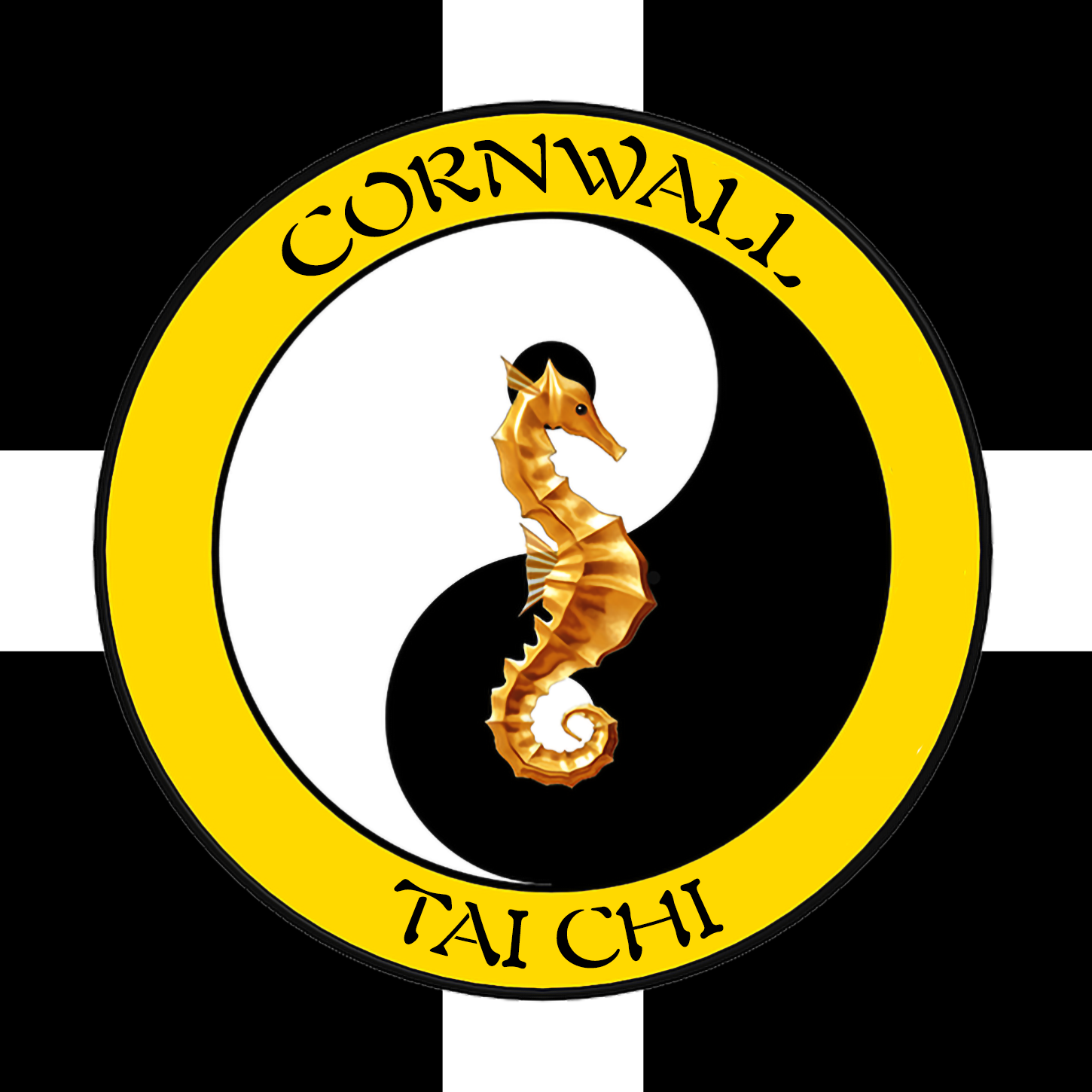
Tai Chi is based on the principles of Ancient Chinese Medicine. In the Neijing or Yellow Emperor’s classic of internal medicine, it says: “Don’t sharpen your knife on the way into battle, or start digging a well when you feel thirsty”. This means that the basic principle of this method is preventative medicine, rather than treating specific illnesses with drugs or surgery like Western medicine, it seeks to improve the functions of the internal organs and improve the flow of Qi or life force around the body. Building up a good store of Qi is seen as the best way to stave off illness and old age and keep the body young and flexible and full of energy. The body regenerates itself, if you cut your finger or break a bone it doesn’t require any medicine for the body to heal the broken parts because the body is constantly replacing and regenerating itself, this is well known even in modern Western Medicine.
In Chinese Medicine illness is seen as a result of blockages in the flow of Qi or life force, Tai Chi exercises help to improve the flow of Qi and blood around the body and this helps to rejuvenate the internal organs and keep them at maximum efficiency so that the whole body is supplied with Qi.
What to expect in a Tai Chi class
Lee style Tai Chi comprises two forms known as the Tai Chi dance or Tiào wǔ 跳舞 which is has been popular since the sixteenth century, and a much older form known as the Tai Chi form which was first practiced by Ho Hsieh Lee as eight basic stances since the Zhou dynasty of 1000 BC.
As well as forms there are also partner exercises such as Yīfù shǒu 依附手 or sticky hands and whirling hands and whirling arms which teach the basic principles of self defence and develop balance and sensitivity and the use of softness to overcome physical strength.
A typical class as taught by Chee Soo lasts for ninety minutes. The first part is warming up exercises and then there is a deep breathing exercise to activate the dantian which is an energy centre in the lower abdomen where Qi energy or life force is stored.
The next part of the class is the Lee style of qigong which is called Kai Men which means open door and involves a series of relaxed exercises utilizing deep breathing to open up the energy channels of the body in preparation for the Tai Chi exercises.
Once the energy is activated then we practice the Tai Chi dance which gets energy flowing around the system, this is a loose and relaxed form that emphasizes flow.
In the middle of the class, we usually do some partner exercises like sticky hands or Yīfù shǒu 依附手, and then various other partner exercises designed to teach you how to use Qi instead of physical strength and movement. There are also exercises that develop your awareness of Li or macrocosmic energy which is a universal energy field that flows through the body but comes from the Universe itself and is present all around us. This universal energy can be used to supplement the store of Qi or personal life force.
As we come to the end of the session we usually practice the Tai Chi form which is a slower and more concentrated type of moving meditation. At the end of the class, we always do the Five Lotus Blossoms Qi cutoff exercise which returns the energy to the dantian where it can be stored until the next time we need to use it.
Kai Men qigong
Our Tai Chi classes include qigong which means cultivating the life force. These are a series of exercises sometimes called Taoist Yoga, although there are differences to conventional Indian Yoga. Qigong is also closely related to Tao Yin or breathing exercises. One of the main forms of energy in the body which goes together to form the Qi we produce day to day is from the lungs, so improving the uptake of Qi by increasing the breathing action and increasing the lung capacity is very important. At the start of the class, we do a special exercise that involves deep breathing and also gives a massage to the internal organs such as the kidneys which improves their function. In Chinese medicine, the kidneys contain a vital essence known as Jing which is one important component that goes together to help the body produce more Qi.
What is Qi?
Qi energy is not a metaphor or concept but a real thing, the difficulty for Westerners is that it is not part of our culture so it’s something we ignore. In China, Qi is a part of their worldview and culture and has been for thousands of years. That is because Chinese culture has been shaped by Taoist philosophy and this is centered around the idea of balance of physical, mental and spiritual elements forming a whole.
With Tai Chi training, Qi it is something you can learn to become aware of, and more importantly, you start to learn the methods you need to know how to cultivate Qi and not waste it through bad lifestyle habits like bad diet and so on. Once you become more aware you can start to apply the principles for yourself of regulating your energy input and output and you start to feel the benefits right away. With more practice, these benefits become more and more tangible. Think of it like the battery in your phone, sometimes it’s fully charged, and sometimes it’s run down and needs to be taken offline and charged back up again. Some people who already have a full charge will feel the benefits right away. If you are tired or run down and your Qi has become depleted through chronic illness, stress, bad diet and so on, it could take longer for you to feel the effects as your battery is still charging up, you are gaining benefits but you may not be aware of them right away.
Tai Chi is something that has been developed by a great many people over hundreds if not thousands of years and has its roots in Tao Yin and Qigong exercises which have been practiced in China since ancient times. More than 100 million people practice Tai Chi every day all over the world. Come and join our Tai Chi class and enjoy the benefits and see the results for yourself.

